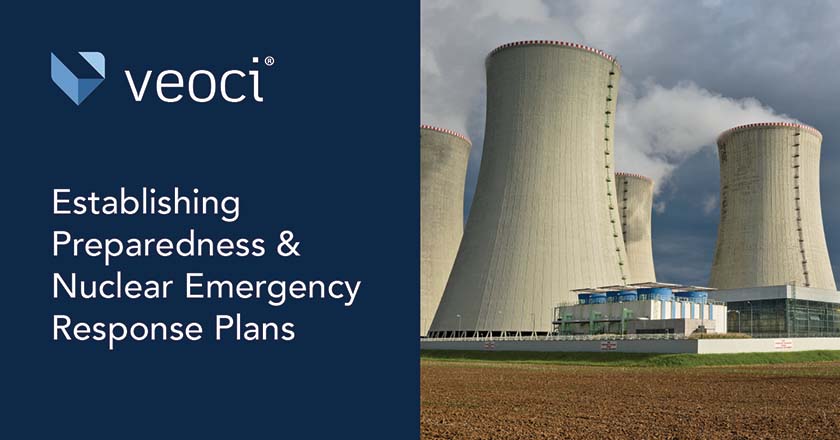Although nuclear plant incidents are extremely rare, they have far reaching effects.
Responders and emergency managers need to ensure the well-being of the public during a radiological event through messaging, account for the potential long-term effects of an event, ensure their plans are compliant with FEMA and NRC regulations, and wrap in multiple stakeholders. With this in mind, how can local leaders build disaster preparedness and manage all of these moving parts during radiological events?
Preparedness Challenges
When any incident happens, EOC and all response stakeholders have to activate a lot of different parts of a response. For a long time, EMs and their teams had to use pen-and-paper processes. But many digital platforms, ones that simplify the coordination and kick-off of essential response processes, are tangible options in many EOCs.
Pen-and-paper can’t reach the efficiency of digital platforms, and they can even slow down the coordination and initial response actions teams undertake. Response managers have to work with their teams to share forms and checklists that ensure that tasks are completed.
Radiological events add another layer of stress and complications for emergency managers to consider. Response leaders need to reach out to local jurisdictions also affected by the nuclear event, and inform the larger public of the steps they need to take to ensure their safety.
With a non-digitized process, checklists and forms have to be filled out and shared physically, which can slow response times and lead to information being lost in the shuffle or not delivered to the correct people. In these situations, communication between jurisdictions is often conducted via phone or radio, which is slower than mass notification communications or sharing a digital room where updates are posted. Overall, these non-digitized processes can act as a hindrance to responding efficiently and safely to an incident.
As with any incident response, there are some best practices that emergency managers can engage in to best prepare response stakeholders and affected residents. Emergency managers in areas within radiological emergency planning zones (EPZs) can incorporate the following elements into their programs to build that critical preparedness.
Preparedness for Radiological Events
If you’ve worked in emergency management and done some disaster planning, some of these steps will probably feel pretty familiar.
The first step is running exercises that simulate a radiological event.
Radiological events are extremely uncommon, and most people will go their entire lives without the threat of one. While many of us have the same chance of experiencing a radiological chance as we do of winning the lottery, an emergency manager’s job is to plan and steer the response through the most unusual conditions. Anything that achieves these goals is worth pursuing, and exercises do this by building familiarity for stakeholders with the response processes they engage with during an event.
Digital platforms can shoulder the most burdensome aspects of running exercises. They enable an “anywhere, anytime” approach, cutting out the need for response players to be in the physical EOC. Additionally, emergency managers can run their real plans in exercises through the use of digital platforms, giving them a sightline into how their work would fare in a real-world scenario.
The second step is combing through documentation from past responses. After action reports and incident mapping can help counties understand how events unfolded and what can improve in future activations.
Capturing communications and other actions in the middle of a response is a serious challenge for many EOCs. One of the benefits of jumping to a digital platform is the option of reeling in each comment, form submission, and action an EOC takes in real-time. These snapshots provide a chance for reflection, and it’s from those moments do emergency managers make plans that respond well to the emergencies they’re built for.
While your team probably hasn’t had to respond to a radiological incident, it can use the AAR reports and data from past events to ensure its nuclear response plan doesn’t have any holes.
The third step for emergency managers and their EOCs is establishing mapping ahead of a possible event.
Many digital platforms come with GIS mapping features. Emergency managers can deploy a platform’s mapping capabilities to build a strong visual of an event as it unfolds. Responders can report developments from the field, and emergency managers can share the map with all relevant parties. This level of data visibility brings important insights into a response, ones that can make a difference during a radiological event.
Emergency managers can also use maps to monitor siren range, coordinate manual evacuations, or share information with the public regarding checkpoints, closures, and routes.
Making the Move to Digital Preparedness
You, as an emergency manager, want to have all the tools possible to respond to radiological events. Staying prepared can mean the difference between a smooth response and one that fails from the start. Digital platforms can put the tools needed to build a comprehensive and prepared program, one that ensures your team;s success regardless of the circumstances.








